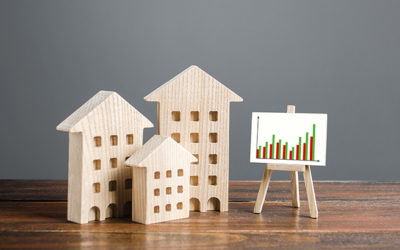
“One of the biggest misconceptions among housing consumers is what the typical down payment is and what amount is needed to enter homeownership.”
If you’re planning to buy your first home, then you’re probably focused on saving for all the costs involved in such a big purchase. One of the expenses that may be at the top of your mind is your down payment. If you’re intimidated by how much you need to save for that, it may be because you believe you must put 20% down. That doesn’t necessarily have to be the case. As the National Association of Realtors (NAR) notes:
“One of the biggest misconceptions among housing consumers is what the typical down payment is and what amount is needed to enter homeownership.”
And a recent Freddie Mac survey finds:
“. . . nearly a third of prospective homebuyers think they need a down payment of 20% or more to buy a home. This myth remains one of the largest perceived barriers to achieving homeownership.”
Here’s the good news. Unless specified by your loan type or lender, it’s typically not required to put 20% down. This means you could be closer to your homebuying dream than you realize.
According to NAR, the median down payment hasn’t been over 20% since 2005. In fact, the median down payment for all homebuyers today is only 14%. And it’s even lower for first-time homebuyers at just 6% (see graph below):
What does this mean for you? It means you may not need to save as much as you originally thought.
Learn About Options That Can Help You Toward Your Goal
And it’s not just how much you need for your down payment that isn’t clear. There are also misconceptions about down payment assistance programs. For starters, many people believe there’s only assistance available for first-time homebuyers. While first-time buyers have many options to explore, repeat buyers have some, too.
According to Down Payment Resource, there are over 2,000 homebuyer assistance programs in the U.S., and the majority are intended to help with down payments. That same resource goes on to say:
“You don’t have to be a first-time buyer. Over 38% of all programs are for repeat homebuyers who have owned a home in the last 3 years.”
Plus, there are even loan types, like FHA loans with down payments as low as 3.5% as well as options like VA loans and USDA loans with no down payment requirements for qualified applicants.
If you’re interested in learning more about down payment assistance programs, information is available through sites like Down Payment Resource. Then, partner with a trusted lender to learn what you qualify for on your homebuying journey.
Bottom Line
Remember, a 20% down payment isn’t always required. If you want to purchase a home this year, let’s connect to start the conversation about your homebuying goals.
To view original article, visit Keeping Current Matters.
How Interest Rates Can Impact Your Monthly Housing Payments
If you’re thinking about buying a home, mortgage rates are working in your favor. Waiting may mean a significant change in your payments.
How Your Tax Refund Can Move You Toward Homeownership This Year
If you’re looking to buy a home in 2020, have you thought about putting your tax refund toward a down payment?
10 Steps to Buying a Home
Here’s a guide with 10 simple steps to follow in the home buying process. Our favorite is #3! We are here to help you make your home buying process as easy as it can be! Call us today!
How Much “Housing Wealth” Can You Build in a Decade?
“Homeownership is an important source of wealth creation, enabling current homeowners to move up the economic ladder.”
Thinking of Selling? Now May Be the Time.
The market is entering the year like a lion. There’s no indication it will lose that roar, assuming inventory continues to come to market.
Entry-Level Homeowners Are in the Driver’s Seat
Whatever you choose, if you’re moving out of an entry-level house, you’re likely going to be in the driver’s seat as a seller.






